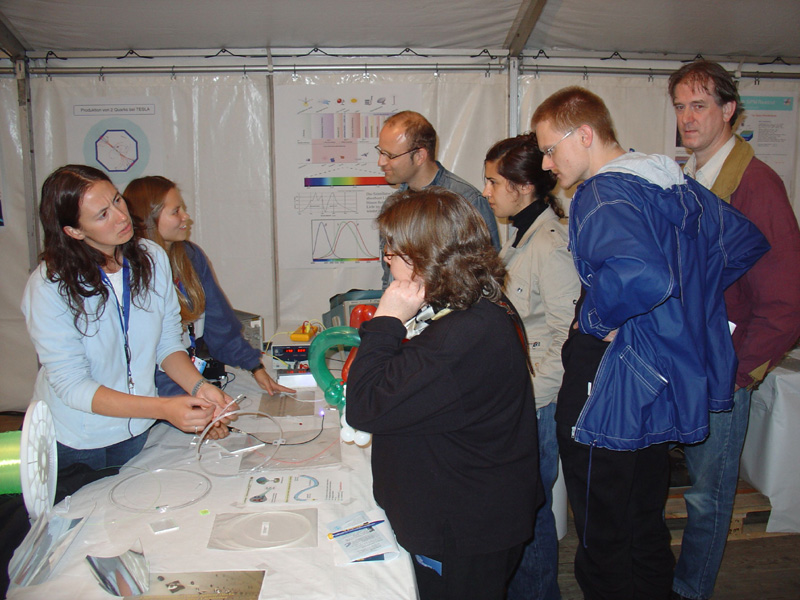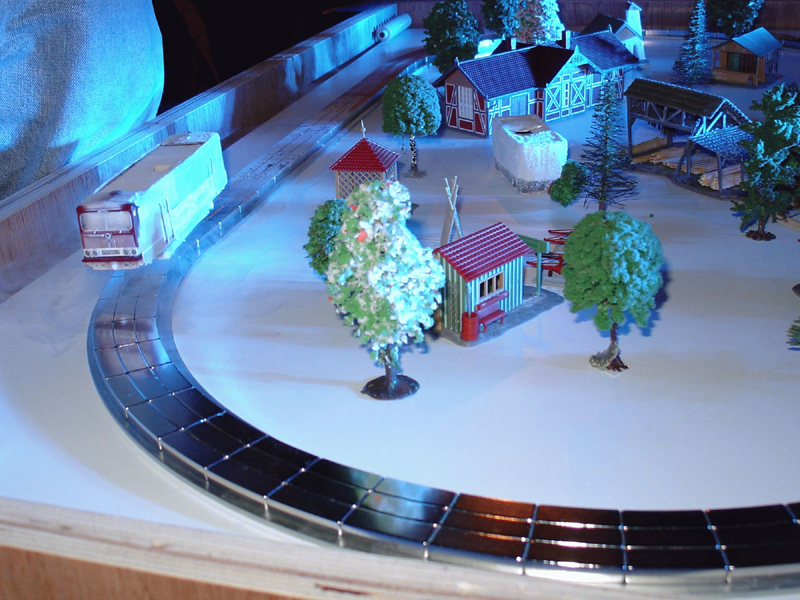
DESY scientist Erika Garutti (left) and diploma student Nanda Wattimena are explaining the optical readout of the scintillating tile hadronic calorimeter of the ILC detector to visitors.
|
Last Saturday night, on October 29th, the first "Science Night" took place in Hamburg, Germany. All major research organizations and universities opened their doors for a night full of science. A shuttle service with 8 different bus lines and one boat line connected places all over town between 6:00 p.m. in the evening until 1:00 a.m. on Sunday morning.

A pellet of a superconductor with high critical temperature cooled down with liquid nitrogen lets this model railway levitate over its magnetic track.
|
DESY participated with an exhibition, which was placed around the VUV-FEL at the TESLA Test Facility TTF. All research areas at DESY, including accelerator research, research with photons and High Energy Physics research participated with exhibitions containing posters, hands-on experiments, talks, games and a lot of fun. Special emphasis was put on introducing the European XFEL project to the public.
A focal point of the DESY exhibition was superconducting RF which will be used for the European XFEL and the International Linear Collider. Visitors learned a lot about superconductivity, such as trying to understand how a model railway with a high-TC superconductor carriage was able to levitate above its track.

Oliver Schaefer from Rostock University is explaining the method of linear acceleration to these visitors at 12:30am in the morning.
|
The physics opportunities of the ILC were presented in a dedicated exhibition with the name 'Back to the Big Bang'. Physicists, engineers and students of the HEP research groups of DESY together with guest scientists spent the better part of the night explaining to visitors the benefits of scattering experiments, how a cloud chamber works, and of course the connection of the smallest particles and the fate of the universe. In addition, a glimpse into the life inside the laboratories was given by presenting the research ongoing on ILC related detector R&D efforts at DESY with a lot of hands-on examples.
The DESY event was accompanied by a carefully designed illumination of the DESY installations around the visitor's paths. The DESY halls and buildings were glowing in blue and red, giving the whole nighttime event a spectacular appearance.
The "Science Night" was a bigger success than anticipated for DESY. More than 6000 people came and most of them stayed much longer than expected. The last visitors left the DESY site after 1:30 a.m. in the morning, taking with them an impression of the enthusiasm of the people working within the research community which pushes forward ambitious projects like the ILC.
--Karsten Buesser
|



